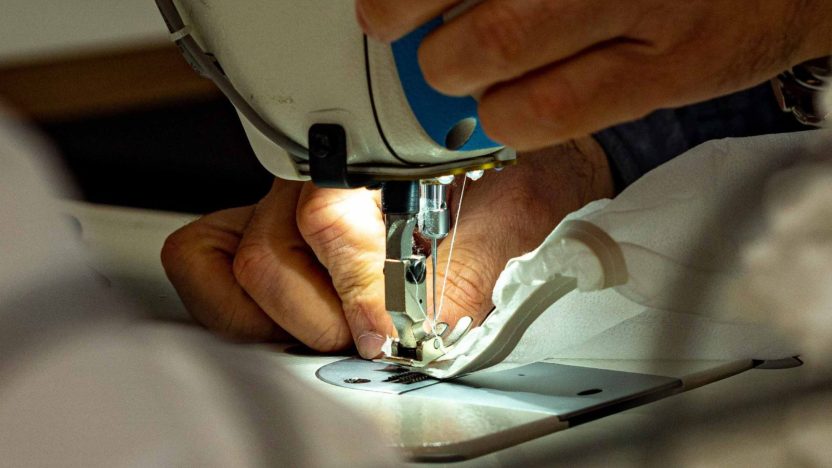Post-pandemic: protect and bolster your brand
In a world that is changing, so must your strategy
by Howard Tullman

As we celebrate the long overdue departure of the Insurrectionist-in-Chief and see every day how quickly and comprehensively even a fantasy brand (and a family) that was fundamentally fraudulent from the beginning can be entirely blown up and destroyed in short order, it’s important for every serious business to take the time and the necessary steps to protect, care for and bolster its own brand and their delicate connection to their customers.
While absence and distance may theoretically make the heart grow fonder, in today’s world as we slowly start to emerge from the pandemic, there are simply no guarantees that things will ever return to “business as usual” or, even more importantly, that your customers will be there ready, willing and waiting for your return and reopening unless you take action now to turn that fragile prospect into a solid promise. Wishful thinking isn’t a great strategy and counting on old habits simply isn’t smart. Old habits may die hard, but the web and the pandemic have opened up a whole new world of choices for even the most diehard fan.
The primary idea to keep in mind is that a lot of what we commonly view as customer loyalty may simply be the product of frequent use, convenience and ease of access, and the absence of a better alternative. Thinking that your former and current customers are going to be blinded by and locked into their habits is a bad bet which sells them short and takes them for granted in a dramatically altered marketplace. As customers emerge from a long dark year of denial with, of necessity, radically changed purchasing and consumption behaviors, they’ll be better equipped and probably somewhat anxious and excited to seek out novel and different ways of doing things. That risk of migration is somewhat mitigated by the sheer volume of choices and offerings which leads quickly to decision fatigue. Brands are a shortcut and an easy way to avoid the hard work and the time it takes to evaluate and try something new. But brand connections aren’t unbreakable.
And, in some cases, the emergence of new technologies and low-cost readily available tools may simply provide customers, prospects and consumers with better value and stronger built-in solutions. Take the American Automobile Association (AAA) for example. As winter persists, I often think of why I have religiously renewed my AAA auto club membership in a time where Google, Waze and other on-board navigation systems have completely eliminated the need for TripTiks (remember those), where I can buy cheap and easy car insurance online by the mile these days (See www.mileauto.com), and where manufacturer-provided, no cost, roadside and towing assistance comes with virtually every decent vehicle and new direct startup competitors are also entering the market. (See www.roadsider.io). Most AAA members don’t even realize that the primary remaining use and value for that colorful little AAA card in your wallet is to surrender it to the nice policeman instead of your driver’s license the next time you’re stopped for speeding so that you can still get through the TSA screening at the airport.
The bottom line is that your brand is an ongoing promise. Great brands are earned every day and become shorthand and shortcuts for your business’s identity. If you are no longer delivering on the promises you’ve made or haven’t kept your offerings at least comparable to those of the competition, your customers have no reason to hang around. And in tough times like these, “good enough” really isn’t. Cookie cutters are for baking, not for branding.
With the advent of aggressive social media conversations and evaluations, the “crowd” is sometimes more in control of your brand than you are, and it only takes a few nasty notes about health or cleanliness concerns to create real problems for you. Listen carefully to your customers and work hard to anticipate their needs and expectations. You have got to up your game, differentiate your products and services, and give your customers compelling reasons to stay.
But please don’t try to compete on price. Once you head down that slippery slope and diminish your brand equity, you can never come back. As we start to see faint glimpses of some serious retail resurgence by late in the summer or early Fall, it’s easy to convince yourself that heavy discounting and sales are the way to quickly build traffic and revenue, but it’s a very bad bet.
Discounts train customers to buy on price, not brand or quality. This may drive one-time trials, but in the absence of real substance and value, you’ll just churn through these folks as they return to their old buying habits. Buying volume (just like tricking traffic through click-baiting on the web) is a short-term fix that’s not sustainable. If you want to hold new customers, you need to focus on delivering value and super service rather than simply the lowest price which – due to the persistent real-time competitive repricing on the web – turns out to be impossible anyway.
And also, be careful of the first “customers” back through the door. There’s a decent chance that they’re bottom feeders and bargain hunters and the very last people that you want associated with your brand and your business. Not only are they unlikely to buy, and highly likely to return worn materials in short order, but they’ll also scare off the real and serious buyers that you built your business on from the beginning. Or they’ll have loads of easy (and maybe suspect cash) and no taste. These are other aspects of brand fragility that you need to carefully manage.
You don’t want to become or be seen as a “Groucho” club. As Groucho famously said, “I wouldn’t want to belong to a club that would have me as a member”. Or be a place that’s so overrun with lookie-loos, that you have the Yogi Berra restaurant problem. As he observed: “Nobody goes there anymore. It’s too crowded.”
Read more about Tullman’s recent works on this topic here and here.


